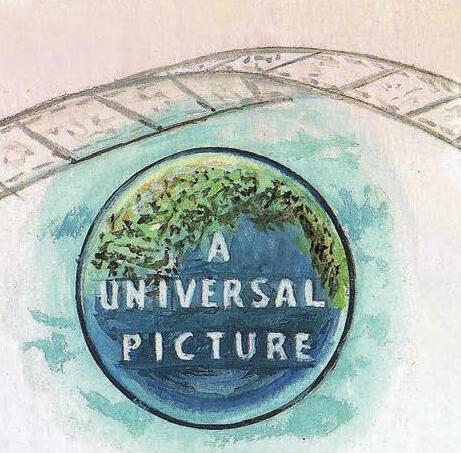
The filmmaking industry was cutthroat. The men who succeeded were tough. Many of them were immigrants, who were willing to work hard and to take risks. They also made the geographic shift from starting out in cities on the East Coast to building major studios in California.
Driving Ambition
Carl Laemmle immigrated to the United States from Germany as a teenager. In 1906, he started a company that rented films to theater owners. Later, he began creating his own movies. In 1912, his filmmaking company merged with several others to form Universal Pictures. Ambitious and driven, Laemmle forced out Universal's other partners until he had sole control. In 1913, he built a stateof-the-art studio in Southern California. He called it Universal City. In the 1920s and 1930s, Universal made low-cost genre pictures, such as horror films, westerns, and musicals.
The Shark
Adolph Zukor was a 16-year-old orphan when he arrived in the United States from Hungary in 1889. He worked as a furrier until he purchased a nickelodeon parlor. Zukor saw the excitement that surrounded nickelodeons among America's growing immigrant population. In 1912, he bought the U.S. distribution rights to Queen Elizabeth, a four-reel French film. It starred the famous stage actress Sarah Bernhardt. The film's success proved there was a market for feature-length films.
To produce and distribute his own films, Zukor established the Famous Players Film Company. It later became a distribution company called Paramount. Zukor's business tactics earned him the nicknames "Shark" and "Killer." One of the people he forced out of business was Sam Goldfish, who later partnered with Edgar and Archibald Selwyn to form Goldwyn Pictures.
The Making of MGM
This story is from the July/August 2023 edition of Cobblestone American History Magazine for Kids.
Start your 7-day Magzter GOLD free trial to access thousands of curated premium stories, and 9,000+ magazines and newspapers.
Already a subscriber ? Sign In
This story is from the July/August 2023 edition of Cobblestone American History Magazine for Kids.
Start your 7-day Magzter GOLD free trial to access thousands of curated premium stories, and 9,000+ magazines and newspapers.
Already a subscriber? Sign In

Eye in the Sky
An interview with Joe Piotrowski

Airborne Animals
Humans have taken to the skies in balloons, gliders, and airplanes-but we're not alone among the clouds. Animals of all sorts have evolved to harness wind power.

TAKING OFF
The Wright brothers expected airplanes to “take off,” but even they might be amazed at the way the airline industry has become big business. In the past, it was expensive to send something by plane.

GROWTH OF AN INDUSTRY
After their historic flight at Kitty Hawk in 1903, Wilbur and Orville Wright returned to Dayton, Ohio. They spent the next few years making adjustments and building additional versions of their powered aircraft in their bicycle shop.

WHY KITTY HAWK?
The Wright brothers searched carefully for the best place to test their gliders and flying machines. Their main concern was for good, steady winds. But they also hoped to find a remote location to allow them to perform tests away from the public eye.

Two Brothers From Ohio
Most people do not realize that the Wright brothers—Wilbur, born in 1867, and Orville, born in 1871—performed various scientific experiments before inventing their aircraft. For as long as anyone in their hometown of Dayton, Ohio, could remember, the Wright boys had worked on mechanical projects.

A Helping Hand
May 6, 1896. A group of people who had gathered beside the Potomac River, just south of the U.S. capital, grew quiet. Then, it erupted in cheers as a small, unmanned aircraft took to the skies and flew for more than half a mile. The flight came seven years before the Wright brothers’ first manned, powered flight. The inventor of the aircraft was Dr. Samuel Pierpont Langley.

THE IDEA MEN
People dreamed of flying thousands of years before the Wright brothers found success near Kitty Hawk, North Carolina. These dreamers, such as Leonardo da Vinci, studied birds flying and imagined how humans might do the same—if only they had wings. Other men developed a more hands-on approach to the topic. Early inventors made wings of cloth, glue, and feathers and tied these creations to their arms in an attempt to imitate nature.

Da Vinci's 4 Designs
Have you ever wondered how a bird flies? Leonardo da Vinci (1452–1519) did. He thought that understanding how a bird flies would provide the key to human flight. So, what did da Vinci learn from birds?

Silken Wings
Seven hundred years before the Wright brothers began experimenting with human flight, the Chinese had already mastered its secrets—with kites.